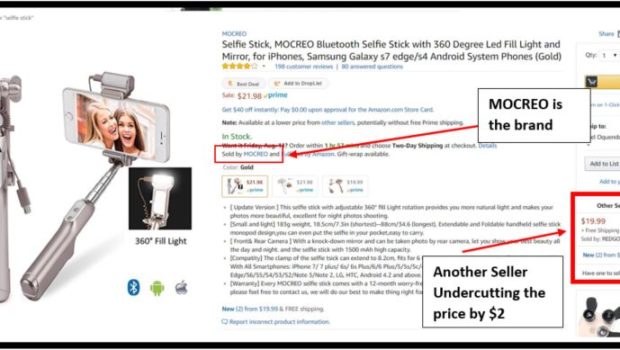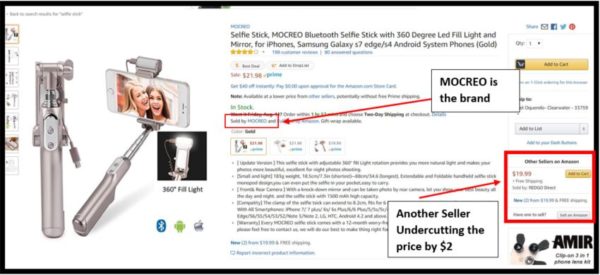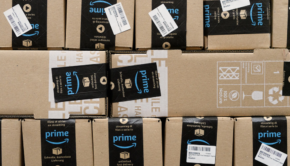6 Ways to Stop Amazon Hijackers
Let’s say your company sells beauty creams on Amazon when you suddenly realize that you aren’t the only one offering it. You’ve spent years developing your brand from scratch and don’t have any reseller agreements. So how could this happen – you’ve been hijacked!
Amazon hijackers continue to grow, posing a more serious threat to marketplace sellers. They range from Chinese counterfeits to Alibaba suppliers and American scammers. Most of these hijackers steal the buy box and sales from brand owners by selling counterfeit products at lower prices. Because of this, we have to know how to stop Amazon hijackers from sabotaging your product listings. But before we jump into that, let’s get a better understanding of who we’re dealing with here.
How do Amazon hijackers affect brands?
If your brand has been selling on Amazon for a while now, then you’ve probably noticed Amazon hijackers selling items under your listing. These hijackers don’t put forth any effort on images or listing optimization. They just hijack your listings and then steal your sales. What’s worse is, they control Amazon’s buy box most of the time.
For you to know how to stop Amazon hijackers, you need to know the different types of hijackers. There are three different types of Amazon hijackers, and each of them has different ways of fulfilling their product shipment.
- Amazon VC Hijacker. These people have access to large quantities of your products and hijack them to sell directly to Amazon under vendor central, which undercuts your brand’s pricing.
- FMB Hijackers. These hijackers sell on your listing and then ship the product to consumers from their warehouse, factory, or distributor. This type of hijacker is often indicative of a significant outdated or damaged goods, distribution leak, or knock-offs that are fulfilled from China.
- FBA Hijackers. These people sell on your listing, but Amazon is the one fulfilling their products. Some of them are unauthorized sellers of legitimate items with huge discounts to MAP pricing, while others are just knock-offs that Amazon allows in their warehouses. They may also be co-mingling with other legitimate products.
How to stop Amazon hijackers
Here are the things you can do to prevent or stop Amazon hijackers from messing with your brand:
- Register your brand on Amazon. Once you’ve properly enrolled your brand in Amazon’s Brand Registry, then you can prove your brand ownership against the sellers who are knocking off your brand. Amazon, in turn, will protect you with a quick procedure:
- Apply with an e-mail registered at that domain
- Send the confirmation to Amazon that you are the rightful brand owner (including e-mail and website proof)
Amazon’s Brand Registry program will also help you in identifying intellectual property violations to ensure that your authored content will show up on the listing.
- Monitor your listings constantly. When you check your listing regularly, you can easily identify any suspicious activity that is related to your listings. The goal is to focus on your top-selling listings where you may be losing the buy box. Make sure that your private label product is the only product that shows up on the results. You can do a quick search for your brand name is one way to help you identify if there are any duplicate listings. Identifying a hijacker quickly can make a big difference in reducing the damage one can cause on your brand and sales.
- Brand your products visibly. Make sure to always display your trademark and logo on your product. Showcase this as much as you can in the product images in your listing so you can help consumers identify an authentic product on their own. Making your product unique will deter hijackers from attempting to counterfeit your products. Even if they do, your consumers will easily realize the scam and report them to Amazon.
- Send a cease and desist letter. The most effective way to deal with hijackers is to directly confront them. Most of their operations will depend on being unnoticed, so a letter that will call them out can solve this problem. However, any message just may not do the trick all the time, so you’ll need to write a cease-and-desist letter.
Write to them and ask them to remove their offer. Tell them that you’re the owner of the brand, and you have gotten previous hijackers suspended through Amazon complaints and legal action. - Purchase from the counterfeiter or hijacker. Another way to stop Amazon hijackers is to buy from them, if they are still selling your products after issuing a cease-and-desist letter, is to make test purchases. As soon as you receive the suspected counterfeit product, don’t forget to take pictures that will prove that the product is not legitimate, or that it lacks branding. Then, call Amazon support as a customer and open a counterfeit case against the seller. You may get a full refund after reporting it. Lastly, send an e-mail to [email protected] from the account you used to buy the items and complain to them. Don’t forget to attach the photos you’ve taken, the order number, and link to the counterfeit storefront. This will help suspend the counterfeit seller’s account.
- File a complaint with Amazon. The formal process of dealing with counterfeit listings is to file a complaint with Amazon. But this process can be different depending on whether or not you have registered your brand.
If you’re already registered, then you can fill a trademark infringement claim against the counterfeiters. Here are the things that you need to do.- Write two or three sentences that state the problem
- Submit screenshots and evidence of the counterfeit
- Send the link to the counterfeiter’s storefront.
If you’re not registered yet, you can still report them by sending an e-mail to Seller Performance at [email protected]. You can include as many details and pictures as you can to explain the issue thoroughly.
An Amazon complaint usually takes longer to process. So, if you want to get a resolution as quickly as possible, then try sending a cease-and-desist letter to the hijacker. This is a lot easier to send and receive, but if this doesn’t work, then try to open a complaint to Amazon.

















